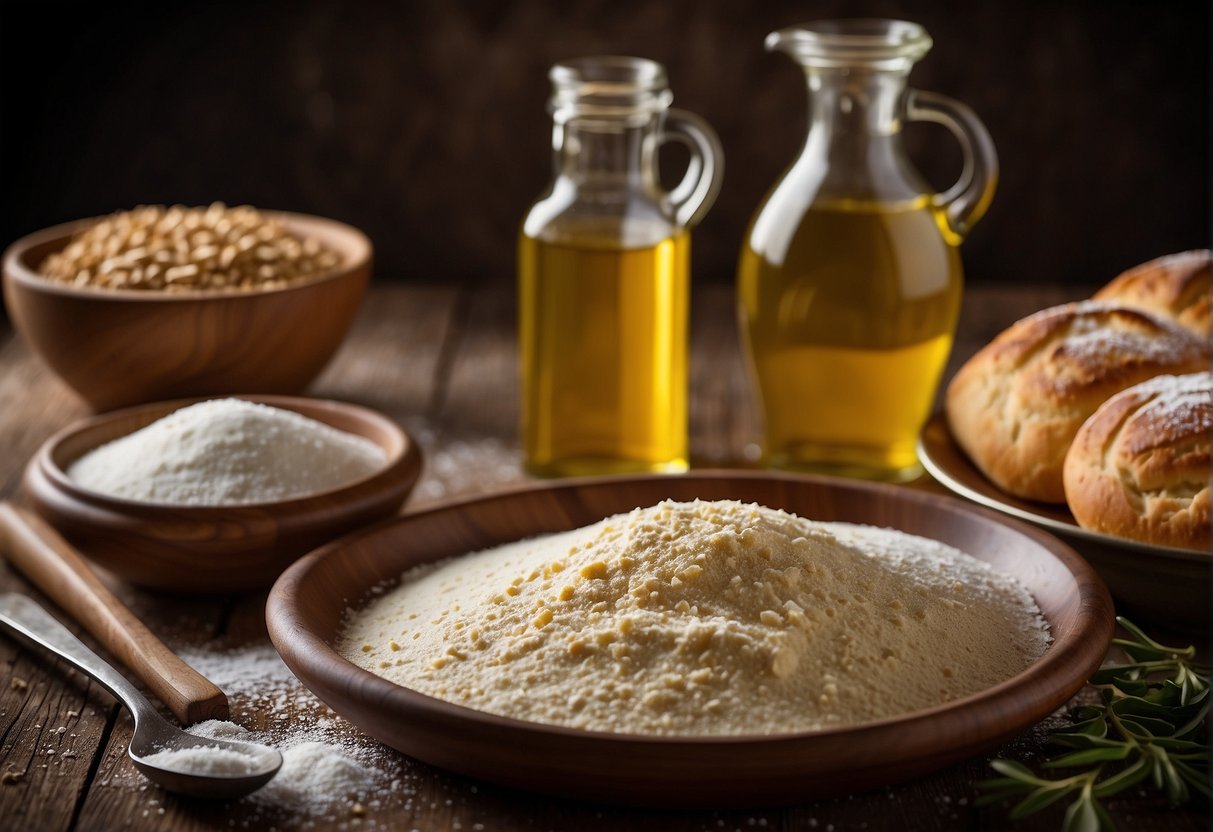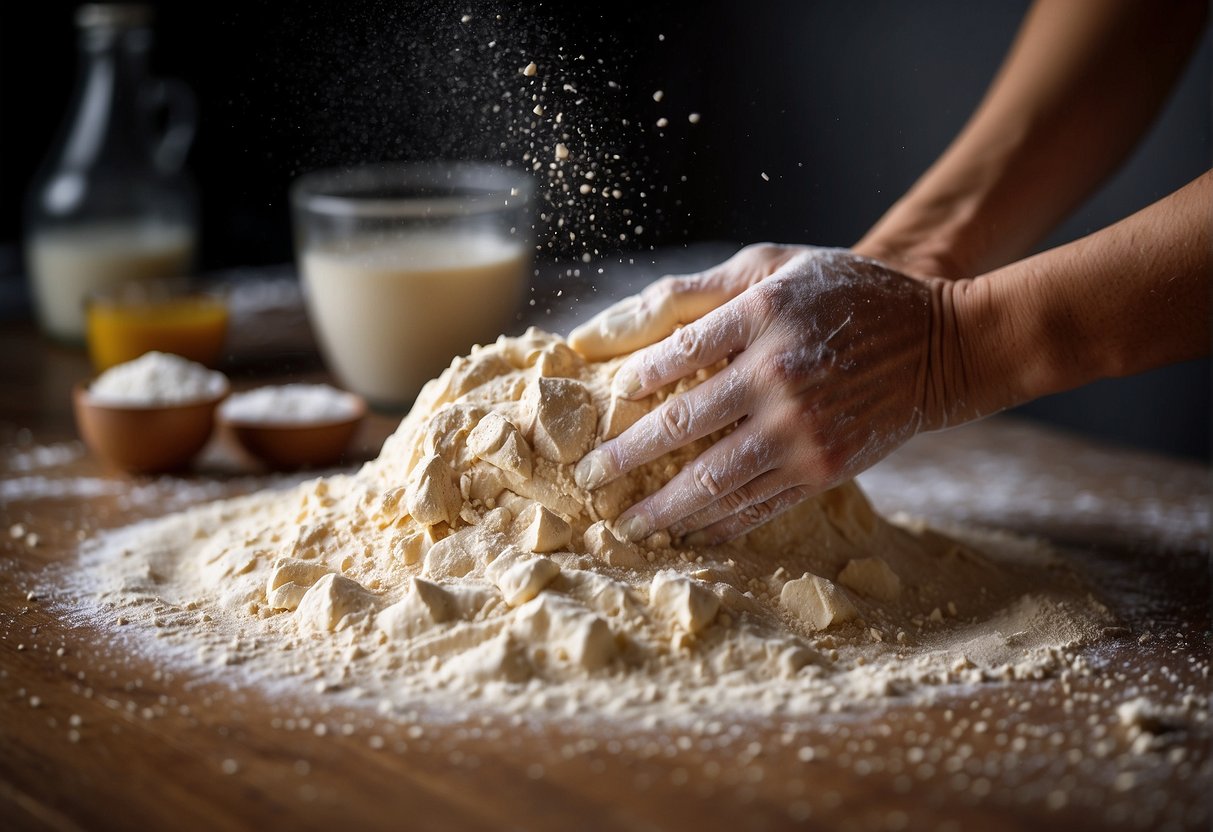Focaccia is an Italian flatbread that has gained popularity worldwide for its versatile flavor and texture. This delicious bread can act as a satisfying appetizer, a hearty sandwich base, or simply a savory snack any time of day. With a few simple ingredients and techniques, anyone can create a delicious focaccia bread right in their own kitchen.
To begin, gather your staple ingredients: flour, yeast, salt, and olive oil. The key to an extra-pillowy and airy focaccia loaf is allowing the dough to rest for an extended period, preferably 18 to 48 hours in the refrigerator. However, if you’re pressed for time, you can still create a tasty bread by following a quicker, three-hour process. With an easy recipe as your guide, creating focaccia from scratch is an achievable feat even for novice bakers.
While basic focaccia bread is delicious on its own, you can enhance the flavor by adding various toppings such as rosemary and sea salt. As you gain confidence and experiment with your recipe, you may discover new combinations that perfectly suit your taste buds. So why wait? Embrace your inner baker and wow your friends with your freshly baked homemade focaccia.
Ingredients and Substitutions

Essential Ingredients
Focaccia is a simple Italian bread that mainly consists of a few basic ingredients. For a traditional focaccia recipe, you will typically need the following:
- Flour: All-purpose or bread flour is commonly used.
- Water: Warm water (around 105°F/41°C) helps activate the yeast.
- Yeast: Active dry yeast is often recommended for ideal fermentation.
- Salt: Kosher salt or sea salt adds flavor and supports the yeast’s performance.
- Olive oil: High-quality extra virgin or extra-virgin olive oil enhances the flavor and texture.
Alternative Flours
If you’re looking to experiment with different flours, there are a few options:
- Semolina flour: Adding about ¼ cup of semolina flour can provide a slightly nuttier taste and golden hue to your focaccia.
- Whole wheat flour: You can substitute up to 50% of the all-purpose or bread flour with whole wheat flour for a denser, heartier bread.
Remember to adjust the water content accordingly when using alternative flours, as they may absorb more moisture.
Creative Toppings
Focaccia is incredibly versatile, and you can customize it with a variety of toppings to suit your preferences. Here are some popular options:
- Herbs: Fresh rosemary is traditional, but you can also use other herbs like thyme or basil.
- Cheese: Sprinkle mozzarella or parmesan over the dough for a cheesy twist.
- Olives: Scatter black or green olives across the bread for a salty, briny flavor.
- Sun-dried tomatoes: Add a sweet, tangy touch with sun-dried tomatoes.
- Garlic: Including minced or thinly sliced garlic cloves will lend a slight bite to the bread.
When adding toppings, you can also get creative with your olive oil mixture. Combine it with minced garlic, ground black pepper, or herbs for a more flavorful bread. Just be sure to avoid adding too many wet toppings, which can make the focaccia soggy.
In conclusion, focaccia is a wonderfully simple bread that can be easily customized with ingredient substitutions and creative toppings. Experiment to discover your favorite combination!
Preparing the Dough

Mixing the Ingredients
To begin making your focaccia dough, start by activating the yeast. In a small bowl, mix 1 cup of warm water (around 105°F/41°C) with 1 package (0.25 ounce) of active dry yeast. You may also use instant yeast if you prefer. Add a pinch of sugar to help kickstart the fermentation process. Allow the yeast to sit for 5-10 minutes or until it becomes frothy.
In a large mixing bowl or the bowl of a stand mixer, combine the following ingredients:
- Flour: 2 ¾ cups of bread flour or all-purpose flour
- Semolina flour: ¼ cup (optional, for an added layer of texture)
- Salt: ¾ teaspoon
- Extra-virgin olive oil: 6 tablespoons, divided
Add the activated yeast mixture to the bowl, and mix everything together with a wooden spoon or a dough hook on low speed until the dough comes together.
Kneading Technique
If using a stand mixer with a dough hook, continue the kneading process on low to medium speed for 5-7 minutes. You want the dough to become smooth and elastic, which indicates proper gluten development.
For those who prefer the hands-on approach, transfer the dough to a floured surface and knead it by hand for about 10 minutes. Use the heel of your hand to push the dough away from you, then fold it back on itself. Rotate the dough 90 degrees and repeat the process until the dough becomes smooth and elastic.
The First Rise
Once your dough has been thoroughly kneaded, shape it into a ball and place it in a well-oiled bowl. Be sure to coat the dough in oil as well to prevent it from drying out. Cover the bowl with plastic wrap or a clean kitchen towel, and allow the dough to rise in a warm, draft-free location.
Give the dough time to double in size, which will typically take 1-2 hours. Some no-knead bread recipes may require longer rising times of up to 12-18 hours, so be sure to follow the specific instructions provided in your chosen recipe.
After the first rise, your focaccia dough will be ready for the next steps: shaping, adding toppings, a second rise (if applicable), and finally, baking to create a delicious and aromatic bread to enjoy.
Shaping and Seasoning
Forming the Bread
To shape your focaccia, start by preparing a 9×13-inch baking pan by greasing it generously with olive oil. Once your dough has risen, gently transfer it to the prepared pan, being careful not to deflate it too much. Using your fingertips, gently press the dough to fill the pan, creating small indentations throughout the surface. If the dough resists stretching, let it rest for a few minutes and continue shaping.
Covering the bases:
- Olive oil: for greasing the pan
- Indentations: created with fingertips for texture
Adding Flavors and Toppings
Focaccia is a versatile Italian flatbread that can be enjoyed with a variety of flavors and toppings. Here are some options:
- Salt: A classic choice is to simply sprinkle flaky sea salt over the top of the dough before baking. This enhances the natural taste of the bread and adds a slight crunch.
- Rosemary and Garlic: For a garlic rosemary topping, mince fresh garlic cloves and mix with finely chopped rosemary leaves. Add some olive oil to create a mixture, and then spread it evenly over your dough.
- Olives: Whole or sliced olives can be pressed lightly into the indentations, adding a burst of flavor and a Mediterranean touch.
- Other Toppings: Feel free to get creative with your choice of toppings. Caramelized onions, sun-dried tomatoes, and thinly sliced vegetables can all be used to add variety to your focaccia.
To summarize your options:
| Topping | How to Apply |
|---|---|
| Flaky sea salt | Sprinkle evenly over the dough |
| Rosemary & garlic | Mix minced garlic, chopped rosemary and olive oil; spread over dough |
| Olives | Press whole or sliced olives into indentations |
| Other toppings | Distribute your choice of toppings evenly on the dough, such as caramelized onions or sun-dried tomatoes |
Once your focaccia dough is shaped and seasoned to your liking, it’s ready to bake. Remember to keep an eye on it, as baking times may vary depending on your choice of toppings. Enjoy your delicious and aromatic focaccia!
Baking and Cooling
Oven Settings
Before you begin the process, preheat your oven to 425°F (220°C). It is essential to have the oven adequately heated before placing the focaccia dough inside. While your oven is preheating, prepare your baking sheet or baking dish with a layer of parchment paper to prevent the focaccia from sticking.
Baking to Perfection
Next, transfer the focaccia dough to the prepared baking sheet or baking dish. Gently stretch the dough to fit your preferred shape and size. Using your fingertips, create dimples across the surface of the dough. Be sure to press all the way down to create the classic focaccia texture.
Now, generously drizzle olive oil over the dough. This will help crisp the crust and create a golden brown finish. You can also add your favorite toppings, such as rosemary and olives, at this stage.
Place the prepared focaccia in your preheated oven and bake for 25-30 minutes. Keep an eye on the bread as it bakes, as oven temperatures can vary. The focaccia is ready when it reaches a deep golden brown color and has risen, creating a fluffy texture.
| Baking Tips | |
|---|---|
| Oven Temperature | Preheat the oven to 425°F (220°C) |
| Baking Time | Bake for 25-30 minutes or until golden brown |
| Baking Sheet Preparation | Use parchment paper to prevent sticking |
Resting Time
Once your focaccia has finished baking, carefully remove it from the oven and transfer it to a wire rack. Allow the focaccia to cool for at least 10-15 minutes before slicing and serving. Giving the bread ample time to rest helps the crumb structure set, making it easier to slice and providing an enjoyable texture.
Remember, patience is essential when it comes to baking bread, especially when cooling your freshly baked focaccia. Enjoy the fruits of your labor, and savor the warm, delicious focaccia you’ve created!
Serving and Storage
Slicing and Serving
Focaccia is a versatile bread that can be served in various ways, making it perfect for any occasion. To maintain its soft and chewy texture, slice the focaccia only when you’re ready to serve it. You can serve the focaccia plain, dipping it in olive oil, or topped with fresh ingredients such as olives, tomatoes, or your favorite Italian toppings.
Focaccia also makes an excellent sandwich bread. To prepare a delicious sandwich, slice the focaccia horizontally, add your preferred sandwich fillings, and enjoy the unique flavors and chewy texture of Italian focaccia.
Storing Leftovers
If you have any focaccia leftovers, follow these brief guidelines to ensure proper storage and retain its best quality:
- At room temperature: Wrap the focaccia in plastic wrap or store it in an airtight container to keep it fresh for up to 2 days.
- Reheating: When you’re ready to enjoy the focaccia again, reheat it briefly in an oven or toaster oven to restore its crispy exterior and soft interior.
- Freezing: For longer storage, slice the focaccia into individual portions, wrap each piece tightly in plastic wrap, and store them in a freezer-safe bag. The homemade bread can be frozen for up to 3 months.
- Defrosting: To enjoy the frozen focaccia, let it thaw at room temperature or heat the slices in an oven or toaster oven until warm and crispy.
By following these serving and storage tips, you can enjoy your homemade Italian focaccia to its fullest, satisfying both taste and nutrition needs.